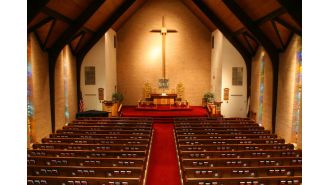The Hard Raise
In the summer of 2003, Brad Burnham and I set out to raise a $100mm early stage venture capital fund. We had both been successful VCs in other firms and we had a thesis that the second wave of the Internet was upon us and that large networks were going to get built in this phase. The term “web 2.0” had not yet been coined and Facebook had not yet been started (LinkedIn was being built around this time).
It took us a year and a half to raise that fund. We traveled all around the country (and to the UK too which was a total waste of our time and money). We spent our own capital raising that fund. We believed in ourselves and our thesis, but it was very hard to get others to understand it. Sometime in the spring of 2004, someone got it. And then a few others did. And by the summer, we had a group together and we were able to build to a first close in November of 2004. We had our final close in February 2005, eighteen months after we started. That was a hard raise.
But that fund, USV 2004, has been one of the very best venture capital funds ever put together. The numbers are public because many (most) of our investors are public pension funds who have freedom of information act (FOIA) obligations to report the performance of the funds they invest in. At that time (early 2000s), the big VCs in the bay area were kicking out FOIA obligated limited partners out of their funds. That was a huge win for us and we got a bunch of those FOIA obligated LPs into our fund. Without FOIA, I am not sure we would have gotten USV 2004 done. But we did.
There is a correlation between hard raises and strong performing investments. It is not a perfect correlation by any means. Some great investments are obvious (Facebook in 2010, Airbnb in 2014) and get done easily by the company and perform very well. And many hard raises are hard because they aren’t good investments.
But there are some investments that are very hard to get done that turn into incredibly strong performers. We have had a few of these in our portfolio over the past year as the expansion capital stage (Series C and D) of the venture capital market has contracted. We have seen companies need as much as six to nine months to get a financing done and we have seen founders and CEOs get rejected by more than fifty investors during that process.
I like to tell them the story of USV 2004. I believe Brad and I got over 100 rejections during that process. Rejection hurts but it is part of the game, particularly when you have a hard raise.
One of the reasons hard raises can turn into great performers is that they often mean you are doing something others aren’t doing, you are early to an opportunity and others don’t see it. That certainly was the case with USV 2004. That’s the contrarian bet in action.
Another reason hard raises can turn into great performers is that you learn something from all of that rejection. Brad and I learned that we weren’t explaining the opportunity clearly and crisply enough. We went and read Carlota Perez on a friend’s suggestion and she helped us frame the “second wave” argument in a much cleaner and clearer way. And once we started investing the capital, we had a framework, influenced by Carlota’s work, that we could execute against. The fundraising process, and all of that rejection, helped harden our investment thesis to great effect.
It is this second reason that I am seeing in action in our portfolio. As these expansion stage companies struggle to raise capital, they are forced into a cathartic (and at times painful) process of self reflection. What is their sales process? Is it efficient? What is their unique value proposition? Is it really unique? What kind of company are they building? Will it be large enough to justify all of this investment?
And as a result, these companies are coming out of these hard raises with better businesses, better operating models (lower burn rates!!), and bigger visions to go execute against.
And I suspect that many of these rounds that have taken six to nine months to get done are going to turn into really strong performers for the investors who have ultimately decided to get behind them. We are using these opportunities to “lean into” these investments with our funds. We are always deeply reserved for our portfolio and believe in doubling down on investments when we have conviction. And, as an investor, you should always be open to having conviction around an investment that is having a hard time getting done. Because they can, at times, be among the strongest performing investments out there.






